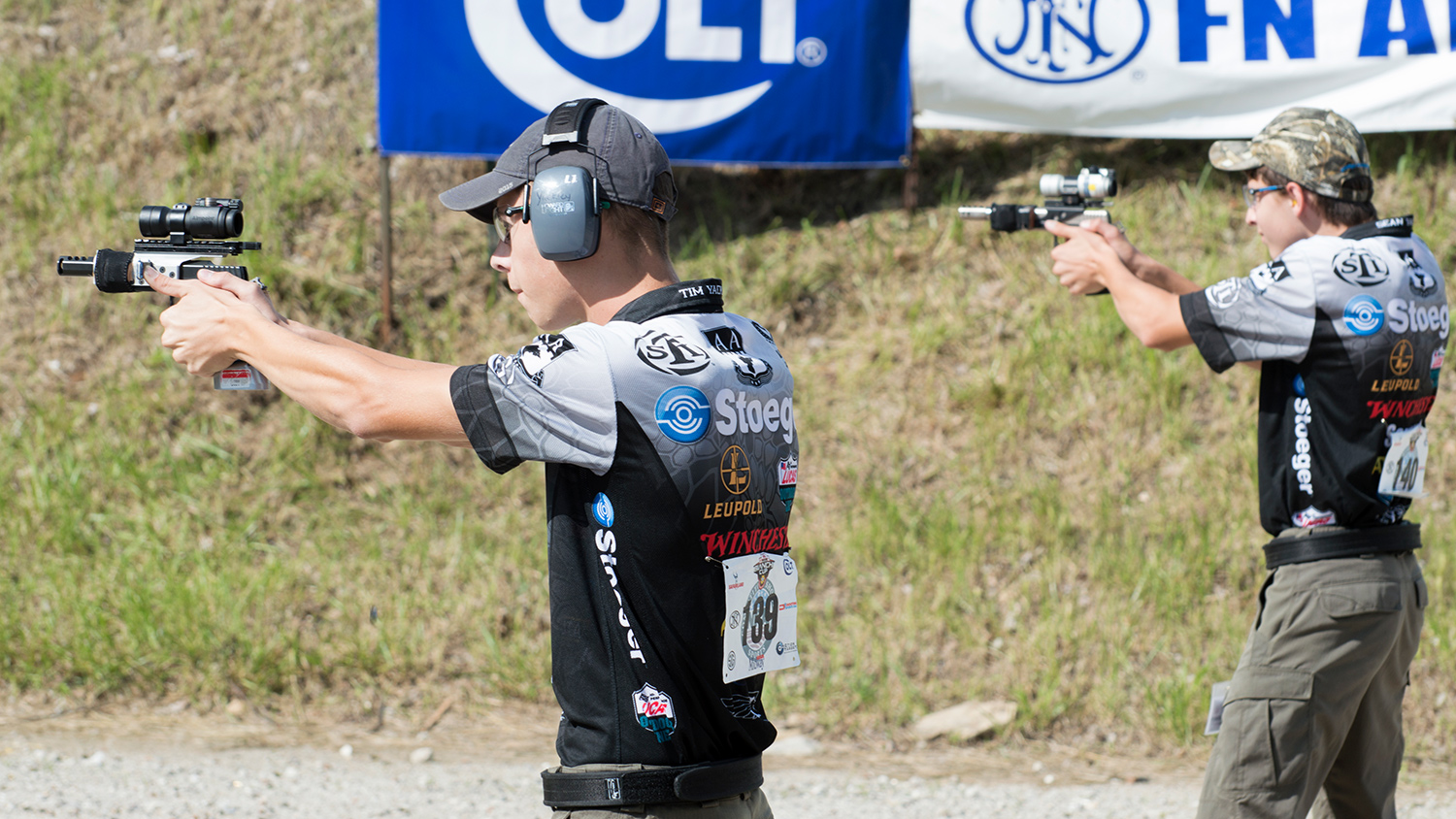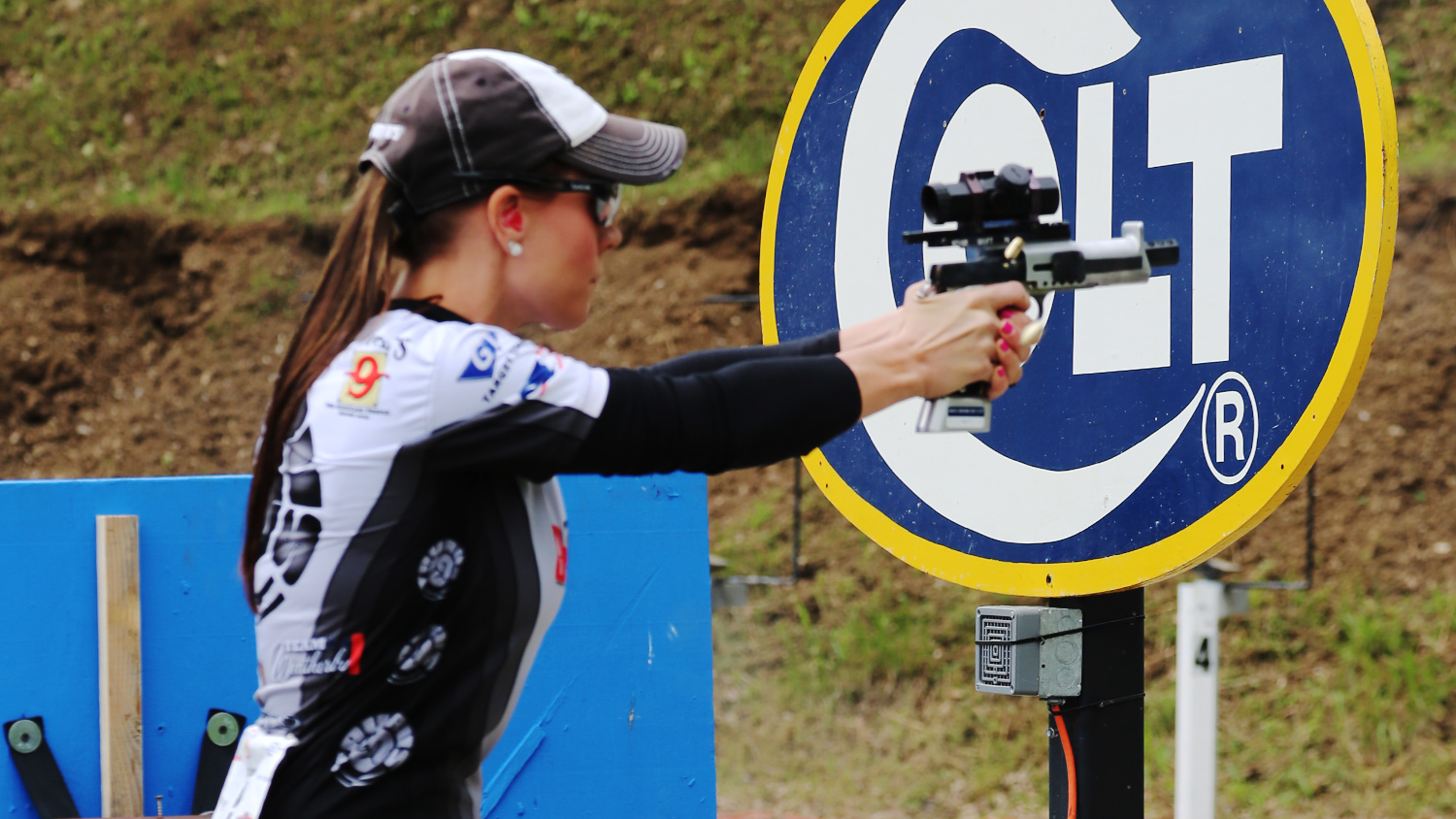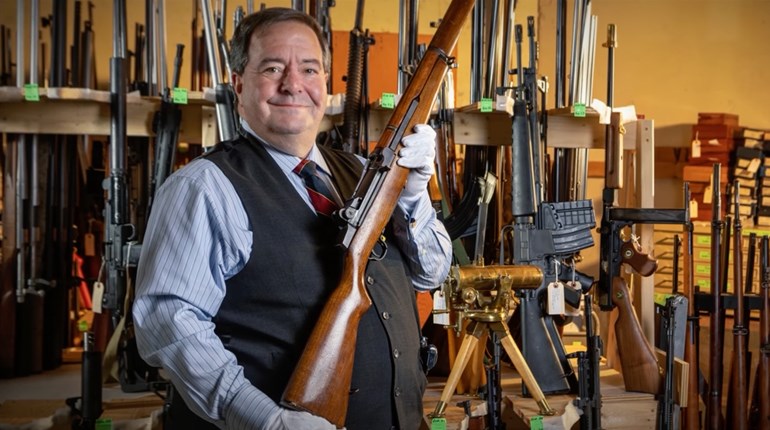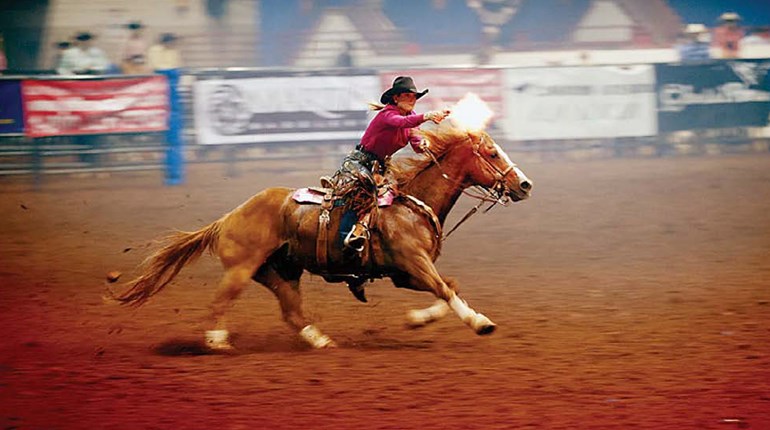
Watching today's Action Pistol stars at the Bianchi Cup can be both awe-inspiring and intimidating for someone genuinely interested in getting into the game. The top shooters are decked out in specialized rigs, with comped race guns and lead-adjustable optics designed explicitly for the Mover. The Mover alone is enough to strike fear into the most valiant of shooters. Getting started in NRA Action Pistol, however, may be much easier than you might think.
The beginnings

The Bianchi Cup Tournament was similar to the other popular "practical" shooting sports of the day—Police Pistol Combat (PPC), and International Practical Shooting Confederation (IPSC)—in that each string, or series of shots, started with the gun in the holster, and was completed in only a few seconds. It resembled PPC in that it emphasized precision marksmanship.

NRA re-designated the match as the National Action Pistol Championship in 1984 and assumed operational control of the contest in the following year. Bianchi International presented the Bianchi Cup to NRA in 1985, and since that time the trophy has been awarded annually to the National Action Pistol Champion.
Action Pistol today
NRA built on what had already been a strong foundation, increasing attendance at the annual Bianchi Cup and instituted a program of regional, state and local Action Pistol matches. Today, there are hundreds of officially sanctioned competitions held each year throughout the country, with thousands of shooters participating. Many clubs also run unsanctioned matches, as well as individual Action Pistol stages.

Since its inception, the Cup's specific stages fired and total round count have varied. At present competition for the Bianchi Cup trophy is based on the four original stages—the Barricade Event, the Moving Target Event, the Falling Plate Event (renamed the Olin "Oli" C. Barjenbruch Falling Plate Event in 2013), and the Practical Event—with a point total of 1920. Since Doug Koenig's winning 1920-157X score in 1990, a "possible" has been pretty much the requirement to be in contention. Nine other stages are also sanctioned for use in official NRA competition, providing the shooter with a broad range of challenges and some additional official targets, such as the steel speed plate. Many stages may also be fired indoors using a reduced-size paper target.

For 2017, the standard Bianchi Cup course of fire (Match X) will be conducted over three days. The Colt Championship Final will be fired the fourth and day of the match. Match X will be used as a qualifier to the Colt Championship Final. The National Action Pistol Champion will be determined by the scores of the Colt Championship Final fired by the qualifying competitors from Match X. Meaning, the scores from the Colt Championship Final will be the sole factor in determining the winner of the NRA Bianchi Cup National Action Pistol Championship; and to reach said Finals, competitors that are in the hunt will have to make the cut during Match X.
Scores fired in NRA-sanctioned matches establish a shooter's classification as Marksman, Sharpshooter, Expert, Master or High Master. This system ensures that a shooter competes only against those of similar skill, and provides opportunities for recognition throughout a shooter's career.
The gear

The predominant cartridge among Action Pistol shooters is the .38 Super or it's variants. Around the country, 9x19mm, .38 Special, .40 S&W and the venerable .45 ACP are also popular. For many competitors, the more powerful revolver and autoloader cartridges are generally considered to be too punishing over the 192-round course of fire, and prevent the quick recovery needed to shoot well under time. Though most of these cartridges will easily exceed the 120 power factor in standard loadings, many .38 Special factory loads are right on the edge; check the published velocity data or, better yet, use a chronograph if one is available to you. A chronograph is an excellent auxiliary piece of gear, as it allows the experienced handloader to make ammunition just slightly above the power floor.
A timer is another useful, though not necessary, piece of equipment. An electronic timer issues a start signal (a "beep") and then times the interval between that signal and subsequent shots. A timer is useful in several ways: for assessing draw speed, for practicing shooting a string within the prescribed time limit and for simulating match conditions.

Technique
The best way to prepare for Action Pistol competition, according to both Fowler and five-time Bianchi Cup winner Bruce Piatt, is to practice the fundamentals, especially trigger control, sight alignment and follow-through. Keep all your shots in the 10-ring at a slow-fire pace before attempting to shoot within Action Pistol time limits. Establish a cadence, especially in the Falling Plate and Moving Target events.

Though there are variations in draw techniques and shooting stances, a universal rule is to keep your finger off the trigger until you are ready to shoot. With semi-autos having a manual safety, the safety is left on until the pistol is starting to point at the target, though the sights may not yet be completely in proper alignment. Be aware that any accidental discharge will, at the very least, usually result in an immediate match disqualification.

Success in NRA Action Pistol competition requires a combination of accuracy and speed that both the novice and the seasoned handgunner will find challenging. And while it is an excellent way to hone handgun skills, it is also a lot of fun!


































